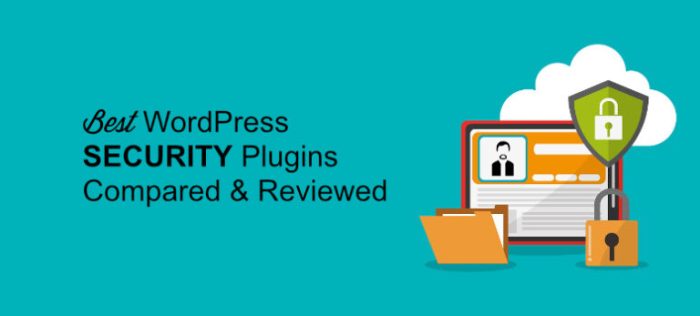In the ever-evolving landscape of online security, safeguarding your WordPress website is paramount. A robust security strategy is no longer a luxury; it’s a necessity. This comprehensive guide explores the best WordPress security plugins for 2025, offering detailed insights into their features, strengths, and weaknesses to help you choose the perfect fit for your needs. We’ll delve into various aspects, from core functionalities to advanced protection mechanisms, ensuring you’re well-equipped to defend against a wide range of threats.
Understanding WordPress Security Vulnerabilities
Before diving into specific plugins, it’s crucial to understand the common vulnerabilities WordPress sites face. These include:
- Brute-force attacks: Automated attempts to guess passwords.
- SQL injection: Exploiting vulnerabilities in database queries.
- Cross-site scripting (XSS): Injecting malicious scripts into your website.
- Cross-site request forgery (CSRF): Tricking users into performing unwanted actions.
- Plugin vulnerabilities: Exploiting weaknesses in poorly coded or outdated plugins.
- Theme vulnerabilities: Similar to plugin vulnerabilities, but targeting themes.
- Phishing attacks: Deceiving users into revealing sensitive information.
- Malware infections: Infecting your website with malicious code.
A strong security strategy requires a multi-layered approach, combining robust plugins with best practices like regular updates, strong passwords, and secure hosting.
Top WordPress Security Plugins for 2025: Best WordPress Security Plugins For 2025
The market offers a plethora of security plugins. Choosing the right one depends on your website’s specific needs and technical expertise. Here are some of the leading contenders, categorized for clarity:

Source: asktheegghead.com
All-in-One Security Solutions:
- Wordfence: A highly popular and comprehensive security plugin offering a firewall, malware scanner, login security enhancements, and more. It provides real-time threat protection and detailed security reports. [Source: Wordfence Website ]
- Sucuri Security: Another powerful all-in-one solution known for its website firewall (WAF), malware scanning, and security hardening features. Sucuri also offers website monitoring and cleanup services. [Source: Sucuri Website ]
- iThemes Security Pro (formerly Better WP Security): A feature-rich plugin providing a wide range of security options, including file change detection, database backups, and user login protection. [Source: iThemes Security Pro Website ]
Specialized Security Plugins:, Best WordPress Security Plugins for 2025
- Limit Login Attempts: This plugin focuses specifically on preventing brute-force attacks by limiting the number of failed login attempts. It’s a valuable addition to any security setup. [Source: Search WordPress Plugin Directory for “Limit Login Attempts”]
- Really Simple SSL: While not strictly a security plugin, it’s crucial for ensuring your website uses HTTPS, a fundamental aspect of website security. [Source: Search WordPress Plugin Directory for “Really Simple SSL”]
- Anti-spam plugins (e.g., Akismet): While not directly addressing website vulnerabilities, these plugins help prevent spam comments and trackbacks, reducing server load and potential security risks. [Source: Search WordPress Plugin Directory for “Akismet”]
- Backup plugins (e.g., UpdraftPlus): Regular backups are essential for disaster recovery. If your website is compromised, having a recent backup allows you to restore it quickly. [Source: Search WordPress Plugin Directory for “UpdraftPlus”]
Choosing the Right WordPress Security Plugin
Selecting the best plugin depends on several factors:
- Website size and traffic: Larger websites with high traffic may require more powerful plugins with advanced features.
- Technical expertise: Some plugins are more complex than others, requiring a higher level of technical understanding.
- Budget: Some plugins are free, while others offer premium versions with additional features.
- Specific security needs: Consider the types of threats you’re most concerned about (e.g., brute-force attacks, malware infections).
It’s often beneficial to combine several plugins to create a robust, multi-layered security approach. For instance, using an all-in-one solution like Wordfence or Sucuri in conjunction with a plugin specifically designed to limit login attempts provides comprehensive protection.
Beyond Plugins: Best Practices for WordPress Security
Security plugins are a crucial component of a strong security strategy, but they’re not a silver bullet. Implementing these best practices is equally important:
- Keep WordPress core, themes, and plugins updated: Regularly update all software to patch security vulnerabilities.
- Use strong, unique passwords: Avoid easily guessable passwords and use a password manager to generate and store complex passwords.
- Enable two-factor authentication (2FA): Add an extra layer of security to your login process.
- Regularly back up your website: This allows you to restore your website in case of a security breach or other disaster.
- Use a reputable web hosting provider: Choose a provider with robust security measures in place.
- Monitor your website’s security logs: Regularly check for suspicious activity.
- Limit user access: Grant only necessary permissions to users.
- Install an SSL certificate: Use HTTPS to encrypt communication between your website and visitors.
Frequently Asked Questions (FAQ)
- Q: Are free security plugins sufficient? A: Free plugins can offer basic protection, but premium plugins often provide more advanced features and better support.
- Q: How often should I scan my website for malware? A: Regular scanning, ideally weekly or even more frequently for high-traffic sites, is recommended.
- Q: What should I do if my website is compromised? A: Immediately take your website offline, identify the source of the compromise, remove malicious code, and restore from a backup.
- Q: Can I use multiple security plugins simultaneously? A: While possible, it’s crucial to ensure compatibility to avoid conflicts. Using too many plugins can also slow down your website.
- Q: How do I choose between Wordfence and Sucuri? A: Both are excellent choices. Wordfence is known for its ease of use, while Sucuri offers more advanced features and dedicated support.
Conclusion
Securing your WordPress website requires a proactive and multi-faceted approach. By combining the right security plugins with best practices, you can significantly reduce your risk of attack. Remember to choose plugins that align with your specific needs and technical capabilities, and always stay updated on the latest security threats and best practices. Don’t wait until it’s too late – invest in your website’s security today!

Source: isitwp.com
Call to Action (CTA)
Start protecting your WordPress website today! Choose the security plugin that best fits your needs and implement the best practices Artikeld in this guide. Your website’s security is your responsibility – take action now!
Answers to Common Questions
What is the difference between a firewall and malware scanner?
A firewall prevents unauthorized access to your website, acting as a barrier. A malware scanner detects and removes malicious code already present on your site.
Are free security plugins sufficient?
Free plugins offer basic protection, but premium options often provide more comprehensive features, faster updates, and dedicated support.
How often should I update my security plugins?
Update your security plugins as soon as new versions are released to benefit from the latest security patches and improvements.

Source: wpcrafter.com
Can a security plugin slow down my website?
Some plugins can impact performance. Choose a well-optimized plugin and monitor your website’s speed after installation.